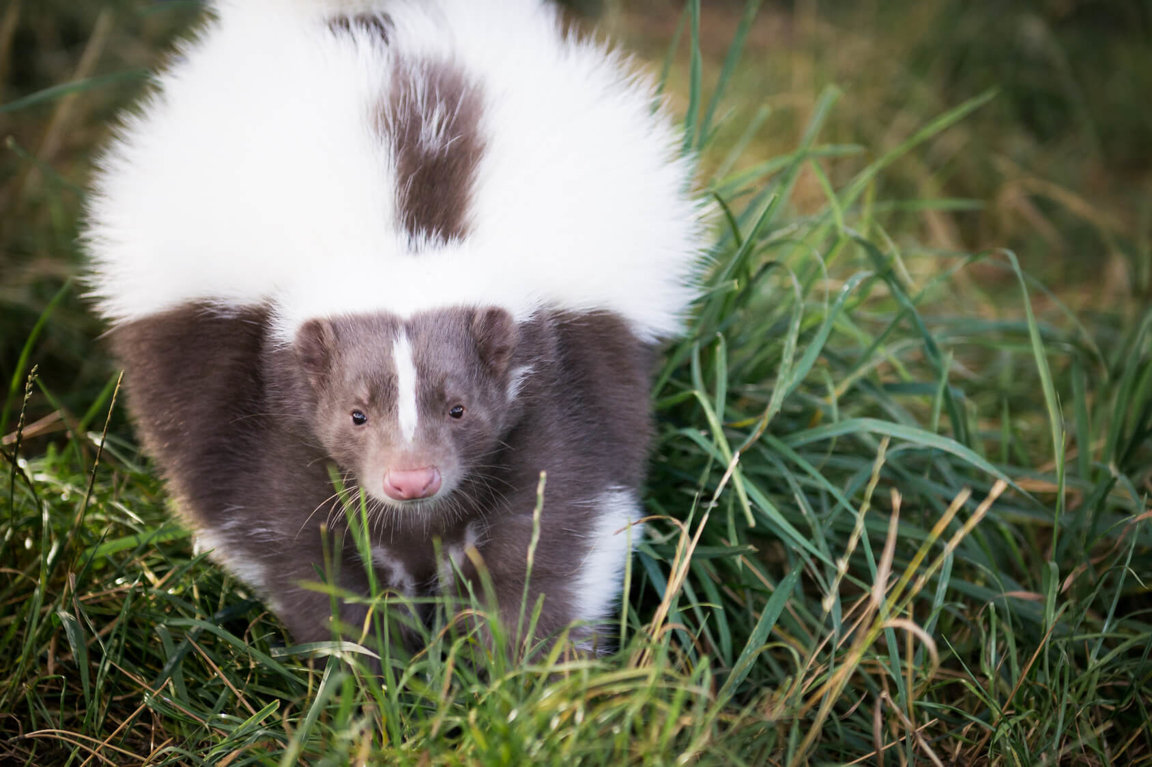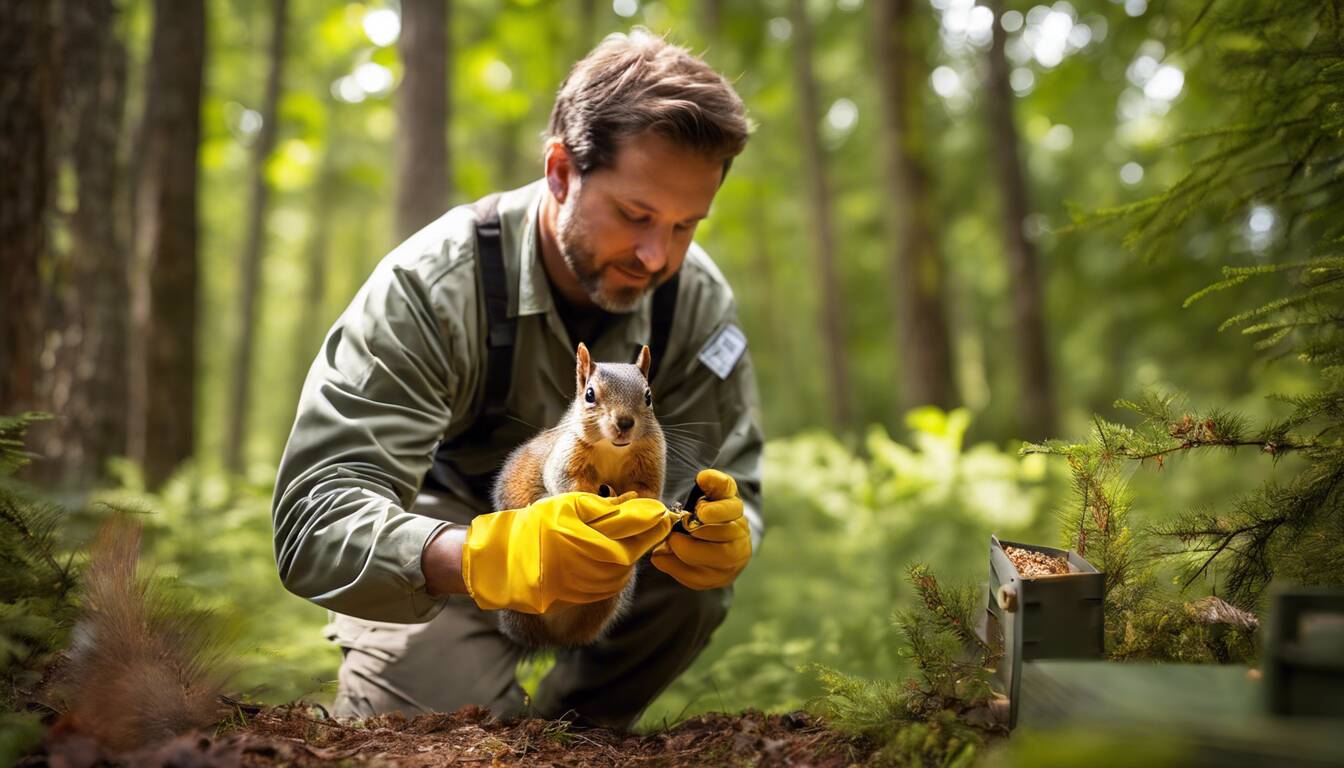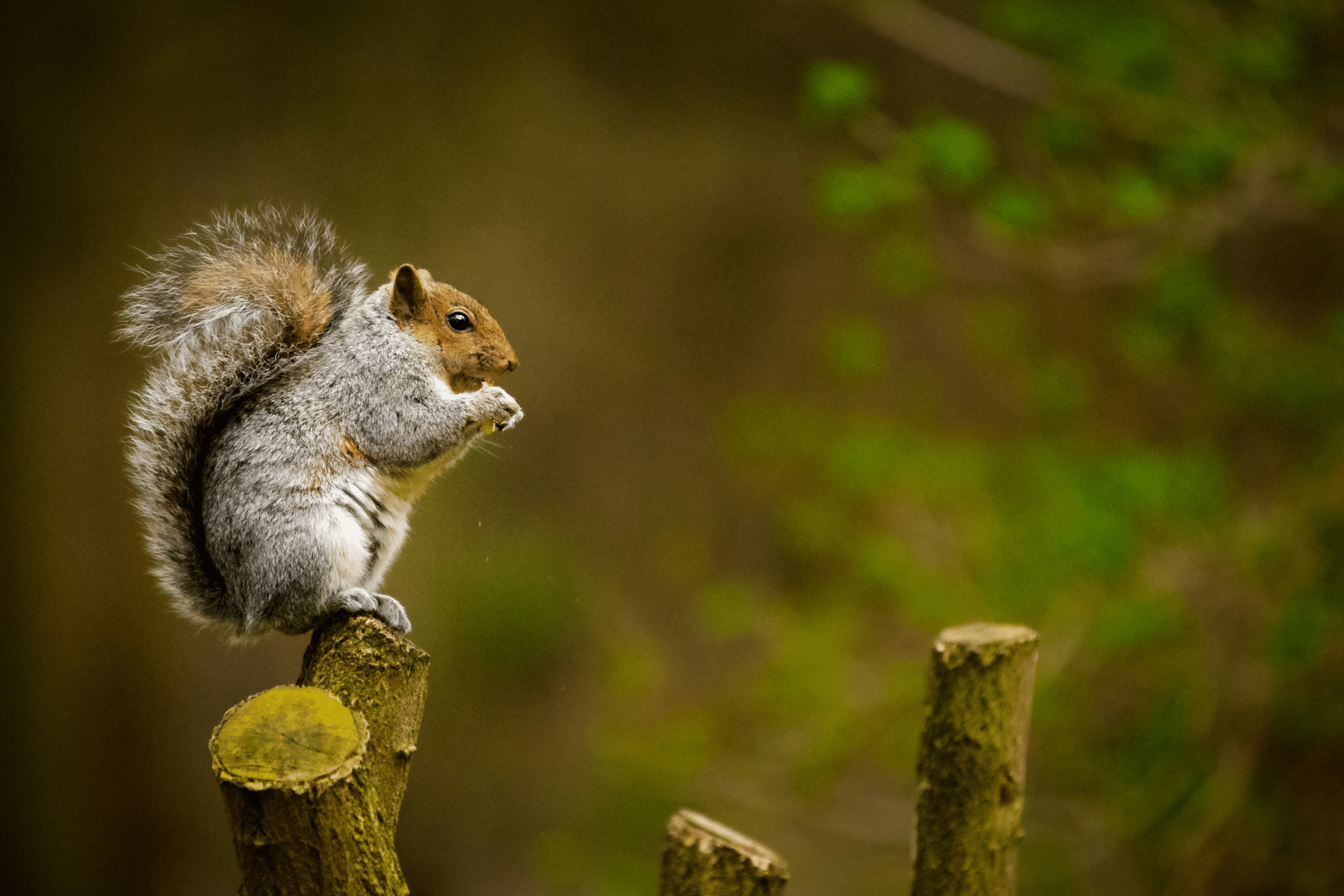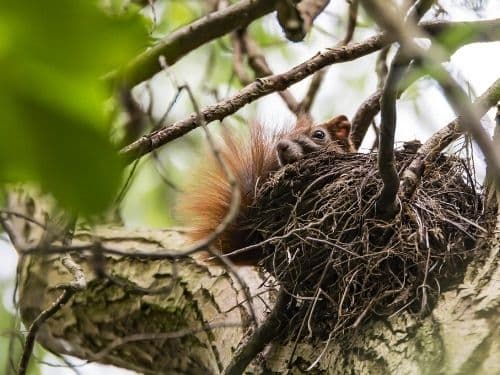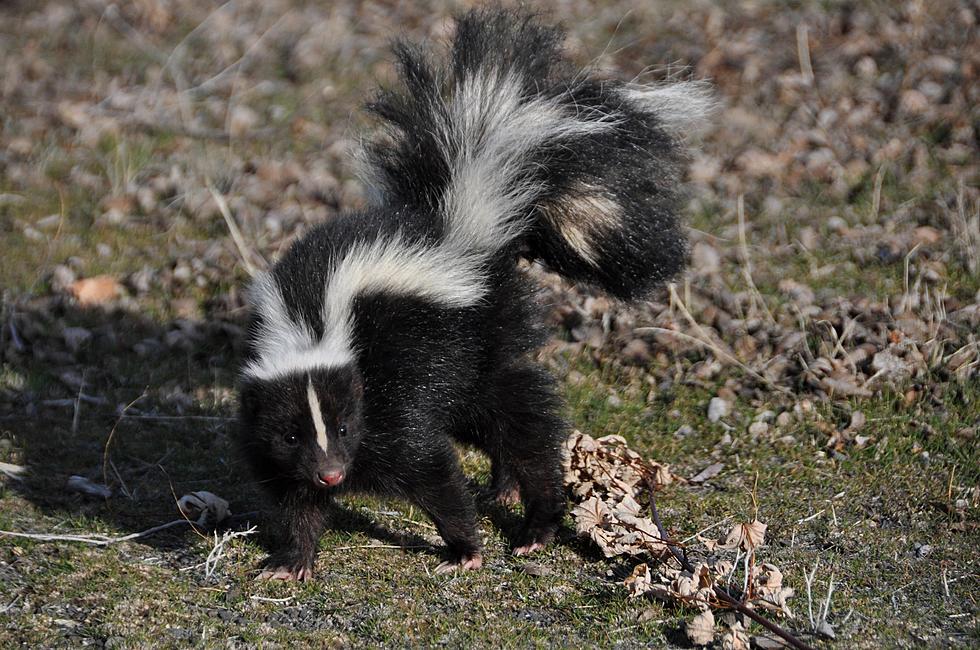
Have you ever been walking through the woods and heard an unfamiliar sound that made you stop in your tracks? It could have been a skunk, a small, nocturnal mammal that emits a distinctive smell when threatened or alarmed. Skunks are typically quiet animals but Skunks make a variety of noises, from hisses and growls to screams and shrieks. In this comprehensive guide, we will explore the different types of skunk sounds, what they mean, and how to identify them. By the end, you will be well-versed in skunk sounds and be able to recognize them in the wild. So if you’re curious to learn more about the skunk’s vocal repertoire, read on to find out!
What Sounds Do Skunks Make?
Skunks are known to make several different screeching sounds including hisses, growls, and even screams. However, the most common and well-known sound made by skunks is their spray or defensive odor, which is released as a warning to potential predators.
Skunks will usually hiss or growl when they feel threatened or cornered, as a warning to the predator to back off. If the predator continues to approach, the skunk will raise its tail, point its hindquarters towards the predator, and then spray its potent odor. This strong-smelling spray is used to deter predators and protect the skunk.
Rare Case Sounds
In rare cases, skunks may also make a high-pitched scream, especially when they feel extremely threatened or are in pain. This sound is usually accompanied by aggressive behavior and is meant to scare off the predator. Overall, skunks make several different sounds, but the most recognizable and well-known is their spray or defensive odor.
The Meaning Behind Skunk Sounds
Skunks are fascinating animals, and they have many unique ways to communicate with each other. The main way skunks communicate is through sound, and they make a variety of sounds to communicate different things.
Skunks will hiss, snarl, and growl to warn potential predators. When they are feeling threatened, they may also stomp their feet, produce musk, and even draw their tails up and release their scent.
Happy Skunks
Skunks also make noises when they are feeling playful, and these sounds can range from high-pitched yips to chirps. Skunks may also make a low, rumbling purring sound when they are content and happy. This purring sound is unlike any sound made by other animals, and it is believed to be a way for skunks to communicate with their young.
Never Scare Skunks
Skunks may also make a variety of vocalizations when they are scared or in danger. These sounds range from yelps and screeches to whines and barks. The purpose of these sounds is to alert other skunks in the area to danger and to warn potential predators to stay away.
How to Identify Skunk Noises
Here are some ways to identify skunk noises:
- Hissing: Skunks often hiss when they feel threatened or cornered. This sound is similar to the hiss of a cat and can be a warning to back off.
- Growling: Skunks may also growl when they feel threatened. This sound is deeper and more guttural than a hiss.
- Screaming: Skunks may scream when they feel extremely threatened or are in pain. This high-pitched sound is not very common and is usually accompanied by aggressive behavior.
- Spraying: The most recognizable sound made by skunks is their spray or defensive odor. This is released as a warning to predators and is not a vocal sound, but rather a physical one.
Identifying Skunk Noises
When trying to identify skunk noises, it is important to pay attention to the context of the sound, such as the presence of a potential predator or the skunk’s body language. Skunks will often hiss, growl, or scream as a warning before releasing their spray, so if you hear these sounds, it is best to give the skunk some space.
Common Skunk Sounds
Skunks are small, solitary animals that make a variety of sounds when they are angry, frightened or content. The most common skunk sounds are hissing, snarling, growling, and stomping of their feet. When skunks are feeling threatened, they will raise their tails and spray a musk to warn potential predators.
Skunks also make noises when they are feeling playful, and these sounds can range from high-pitched yips to chirps. In addition, skunks may also make a low, rumbling purring sound when they are content and happy. This unique sound is believed to be a way for skunks to communicate with their young.
Skunks may also make a variety of vocalizations when they are scared or in danger. These sounds range from yelps and screeches to whines and barks. The purpose of these sounds is to alert other skunks in the area to danger and to warn potential predators to stay away.
In conclusion, skunks make a variety of sounds to communicate different messages. Common skunk sounds include hissing, snarling, growling, stomping, high-pitched yips, chirps, and a low, rumbling purr. They also make several vocalizations when they are in danger, such as yelps, screeches, whines, and barks.
Distress Calls of Skunks or Loud Noises
Skunks do not have a specific distress call, but they may make loud noises if they are in distress or feeling threatened. Some common noises that a skunk may make in distress include:
- Hissing: Skunks may hiss loudly when they feel cornered or threatened, as a warning to the predator to back off.
- Growling: Skunks may also growl loudly when they feel threatened. This deeper and more guttural sound is meant to scare off the predator.
- Screaming: In rare cases, skunks may make a high-pitched scream when they feel extremely threatened or are in pain. This sound is not very common and is meant to scare off the predator.
It is important to note that if you hear a skunk making loud noises, it may be best to give the skunk some space and avoid approaching it, as it may feel threatened and defend itself with its spray.
Differentiating Skunk Sounds from Other Animals
Differentiating Skunks Sounds from Other Animals is an important skill to have if you want to be able to identify the presence of a skunk in the area. Skunks can make a variety of sounds, including hissing, growling, and even screaming. Knowing the difference between these sounds and those made by other animals will help you avoid potential run-ins with the animal. The most common sound a skunk makes is hissing. This sound is made when the animal feels threatened or scared. It is a loud, sharp sound that is often accompanied by a raised tail. Skunks hate loud noises. It also sometimes depends on male skunks and female skunks.
Skunks will also growl and grunt when they feel threatened or when they are trying to defend their territory. The growling and grunting sound is much deeper and less sharp than the hissing sound. In addition to hissing, skunks can also produce a loud, high-pitched scream. This sound is made when a skunk feels threatened or is being attacked.
It is important to note that this sound is not the same sound that other animals make when they are in distress. Therefore, it is important to be able to differentiate skunk sounds from other animals in order to avoid potential encounters with the animal. In order to ensure that you can correctly differentiate skunk sounds from other animals, it is important to be familiar with the unique sounds that each animal makes.
Paying close attention to the sound and the accompanying body language can help you to identify what type of animal is making the sound. Differentiating skunk sounds from other animals is an important skill to have if you want to be able to identify and avoid potential encounters with the animal.
Skunks, the Wild Animal
Skunks are smelly pests that are found across the United States, Canada, and parts of Mexico. Generally, wild skunks prefer to live in open, grassy areas and woodlands, but they may also be found in suburban and urban neighborhoods. That’s right, you can even find skunks living in or around your house or your neighbor’s! Skunks typically like to make their homes in thickets, under decks and porches, or even in abandoned burrows. They will also often rummage through garbage cans to scavenge for food. The rustling noises in the mating season make them a part of scaring wildlife.
It’s not uncommon to spot a skunk in the wild, especially during the spring and summer months when they are most active. Wild skunks can be found in meadows, along the edges of woodlands, and in other open habitats. They have strong claws, and poor eyesight and they love chirping at the night. They are also common around farms, where chickens, eggs, and other small animals provide an easy meal. Skunks often live in small groups of up to 10 individuals and need plenty of space to forage for food and build their dens.
Skunks are also sometimes found in more urban settings. They may take up residence under decks and porches, and can also be found rummaging through garbage cans. While skunks may be attracted to your home for the same reasons as other wild animals, like food and shelter, you should be careful to keep them away – as they are known to spray a strong, unpleasant odor when threatened.
Spotting a Skunk
If you spot a skunk in or around your home, you should call a wildlife removal specialist to help you safely remove it. Skunks can be difficult to deal with on your own, and special precautions must be taken to ensure that you and the skunk remain safe.
All in all, wild skunks can be found in a wide variety of habitats, from rural farmlands to urban neighborhoods – and they are especially drawn to garbage cans!
Conclusion
In summary, skunks make a variety of sounds to communicate different messages. In moments of fear, they may hiss and growl to warn potential predators. When they are feeling playful, they may make high-pitched yips and chirps.
They also make a unique, low-rumbling purr when they are content and happy. Finally, skunks make several vocalizations when they are in danger, such as yelps, screeches, whines, and barks.




